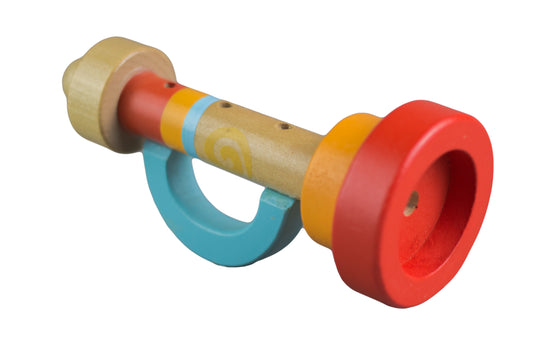Autism spectrum disorder (ASD) is a developmental disorder characterized by repetitive behaviors, social challenges, and communication difficulties. Autism is referred to as a spectrum because it appears differently in every individual, ranging from very mild to severe.
High-functioning autism (HFA) refers to individuals who have strong communication and cognitive abilities but may still struggle with repetitive behaviors and social skills.
Early detection and intervention can help immensely. The world of autism has its own unique challenges, but there are countless supports out there that can help. The sooner autism is detected, the sooner you can begin early interventions such as speech therapy or behavioral intervention as needed.
Caretakers are on the front line and play a crucial role in the early detection of autism. You know your child best and can be their advocate when development doesn’t seem quite typical. Don’t be afraid to speak up to your pediatrician and address any concerns you are having.
Regular developmental screenings can help pediatricians and parents detect early signs of autism. Especially for first-time parents, it can be difficult to know what to expect in a young child’s development, so these screenings give a good idea of what is expected at certain ages. If important milestones are not being met, your child may be exhibiting potential signs of autism.
Caregivers, educators, and pediatricians can work as a team to spot these early signs and get necessary support into place as early as possible to best help little ones thrive.
What Is High-Functioning Autism?
High-functioning autism is a term used to describe individuals on the milder end of the autistic spectrum, with higher cognitive abilities and language skills than others with more severe autism. It is a more casual, relative term used in conversation, as there is no specific line that determines HFA from general autism. However, if a child can effectively communicate their needs or function in a school setting, they may be considered high-functioning.
The American Psychiatric Association’s Diagnostic and Statistical Manual, Fifth Edition (DSM-5) gives us clear, standardized criteria to diagnose autism. The diagnostic criteria include persistent deficits in social communication and social interaction, as well as restricted, repetitive patterns of behavior, interests, or activities. The severity of these symptoms of autism can vary, leading to a spectrum that encompasses a wide range of abilities and challenges; however, there is no set scale to diagnose HFA specifically on the DSM-5.
When considering quality of life, children with high-functioning autism may be able to attend regular school and even be in general education classes. Still, they can benefit from individualized education plans (IEP) or special education services to receive specific support during the school day.
While children with HFA may have stronger language capabilities, they can still struggle with social interactions or experience social anxiety. They may have trouble understanding social cues or have a harder time relating to others to make friends. This can have an impact on mental health and self-confidence.
Interactive books, behavior modeling, and role-playing can be excellent supports to help a child with autism understand social expectations and interactions when trying to make friends with other children.
10 Early Signs of High-Functioning Autism in a 4-Year-Old
Early signs of autism can often be observed in a child's behavior, communication skills, and social interactions during their daily life. It's critical to recognize that every child develops at their own pace, but some signs may indicate the need for further evaluation. Here are some early signs of autism in relation to typical 4-year-old milestones.
1. Difficulty in Social Interactions
Children with high-functioning autism may struggle with understanding social cues and may have a hard time interacting with peers in social situations. If you’re observing your child having difficulty engaging with others, having trouble making eye contact, or having little to no interest in playing with others, this may be a sign of autism.
Lack of imagination or inability to participate in pretend play can be a factor, too. Children exhibiting potential signs of autism may have trouble reading facial expressions and social cues or have challenges recognizing and empathizing with the emotions of others.
2. Repetitive Behaviors
Repetitive behaviors are one of the most common characteristics observed in little ones with autism spectrum disorder. These behaviors often appear in various ways and can provide insights into the child's sensory preferences and need for routine. Repetitive movements can include hand flapping, tapping, or rocking their bodies back and forth, which is sometimes referred to as stimming.
Children with autism often experience fixation. Insisting that things must be in a certain order, resisting changes in schedule, or having a very specific place and order of toys could all be signs pointing to HFA.
3. Communication Challenges
While their language skills may be well-developed, high-functioning children may use language in unusual ways or have difficulty with nonverbal communication, like making eye contact. Some children may experience echolalia, which is the repetition of certain phrases they’ve picked up in social interactions when they feel uncomfortable authentically communicating.
4. Sensory Sensitivities
Sensory sensitivities are a significant aspect of high-functioning autism that often appears in early childhood. Children with HFA may experience hypersensitivity, hyposensitivity, or a combination of both to various sensory stimuli. Sensory sensitivities can include visual, auditory, tactile sensitivity, or a combination of the three. It can also mean a sensitivity to certain foods, leading to a very specific or limited diet.
Proprioceptive sensitivities, or aversion to certain body movements and positions, are also common. This can affect coordination and balance, among other things. If you’re witnessing sensory overload occur in highly stimulating environments with lots of loud noises, your little one may benefit from sensory play, sensory breaks, and coping strategies to help regulate sensory experiences.
5. Difficulty Understanding Body Language
Interpreting facial expressions, body language, and social cues may be challenging for children with high-functioning autism. They may not understand or even pick up on certain kinds of nonverbal communication, making it difficult to infer what someone means.
They also may take gestures literally rather than be able to interpret the meaning behind them. For example, in a teacher and student context, an educator may subtly use body language and social cues to communicate with students without disrupting a lesson.
This could be something like pointing to the bathroom with a questioning facial expression to ask a student if they need to use the restroom. A child with autism may take this literally as a directive to stand by the bathroom door without understanding that the teacher was trying to be considerate and ask a question.
6. Exceptional Skills in a Particular Area
Some children may show impressive advanced skills or knowledge in a specific area, like mathematics or music. This phenomenon is referred to as a “savant ability” or shockingly strong talent. If your child demonstrates an exceptional ability or gift, this may be one of the amazing strengths of high-functioning autism.
7. Need for Routine
Signs of autism frequently include repetitive routines, where things must happen at the exact same time every day, or it’ll lead to stress or anxiety. Changes in routine, even subtle ones, or unexpected events can cause distress or even meltdowns. This indicates a preference for predictability and may require specific notice to help cope if a change in routine is going to occur.
8. Social Communication
While communication skills may be advanced, young children with autism may have difficulty in the social aspects of communicating. This can include starting a conversation, keeping it going, or knowing how to appropriately end it.
They may abruptly walk away or say goodbye before it would be considered socially appropriate. Role-playing these scenarios can help provide them with a toolbox of socially appropriate ways to start or end a conversation.
9. Emotional Sensitivity
Children with HFA may experience heightened emotional responses to various situations, and their reactions might be more intense compared to their neurotypical peers. This can be due to feeling overwhelmed by sensory input, struggling with environmental or routine changes, or experiencing anxiety related to social settings.
They may seek solitude or hide as a way to cope with these challenges and find a safe space for alone time. Caregivers and educators need to recognize emotional sensitivities and provide a supportive and understanding environment in these situations.
10. Difficulty Understanding Others' Perspectives
Little ones may struggle with understanding others' thoughts and feelings, often referred to as "theory of mind." This difficulty may appear when trying to empathize with others' emotions, interpret social cues, or grasp implied meanings in language. Limited awareness of others' thoughts and a concrete thinking style (rather than abstract) contribute to social awkwardness and challenges in building friendships.
Interventions and social skills practice aim to enhance perspective-taking abilities and improve empathy while providing a supportive environment that encourages communication and social expectations. This can help the social development of individuals with high-functioning autism.
How Can Caregivers Help a 4-Year-Old With High-Functioning Autism?
Caregivers play the biggest role in supporting the mental health of 4-year-olds with high-functioning autism. Parents and caregivers are tasked with providing a nurturing and understanding environment. Early intervention is key, and utilizing resources like Big Heart Toys can be extremely helpful in modeling positive behaviors and social skills.
Caregivers can actively engage in playing with toys designed specifically with the unique needs of children with autism in mind, offering opportunities for children to observe and mimic appropriate behaviors. Big Heart Toys serves as a valuable aid in conjunction with healthcare and professional resources, encouraging the social and emotional well-being of children with high-functioning autism.
The Bottom Line
Recognizing the signs of high-functioning autism in a 4-year-old is crucial for their well-being, and early detection can set them up for success by providing effective support. If you are parenting a child with autism, your patience and support make a world of difference in the lives of these incredible children.
Children with autism have incredible potential, and with the right care and support, they can lead happy, fulfilling lives. If you're curious to learn more about autism and related topics, check out our other insightful blogs. Don't miss out on valuable resources — sign up for the Big Heart Toys newsletter to stay informed and empowered in your role as a caregiver. Together, we can create a world that embraces and meets every child's unique talents and needs.
Sources:
Diagnostic Criteria | Autism Spectrum Disorder (ASD) | NCBDDD | CDC
3 Things You Should Know About Echolalia | The Hanen Centre
Autism and Food Aversions | 7 Ways to Help a Picky Eater | Autism Speaks
What is an Autistic Savant? | Living With ASD Comes with Gifts | Applied Behavior Analysis Edu






